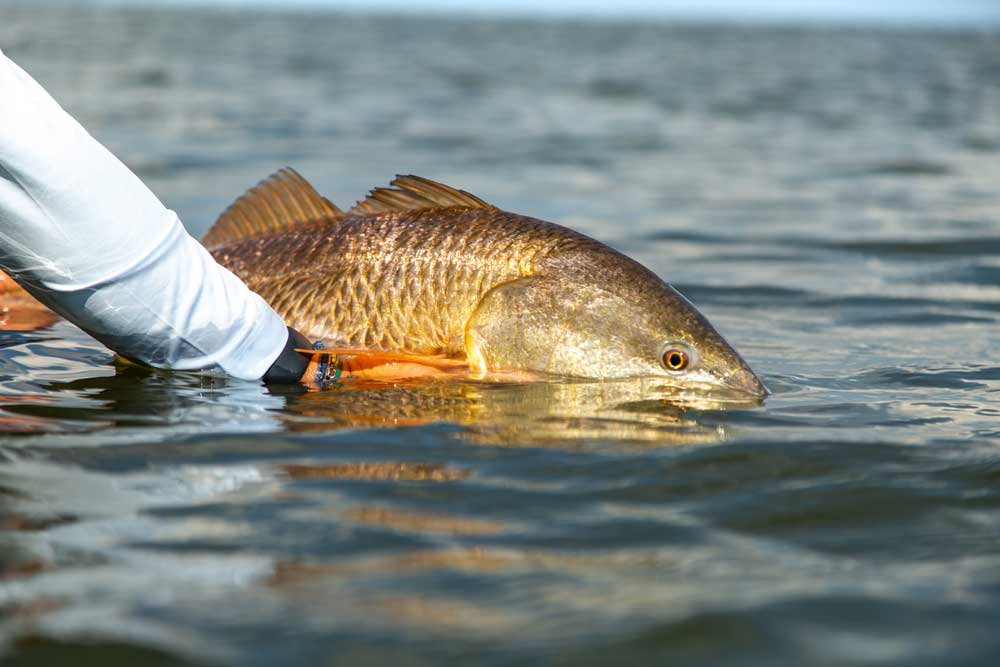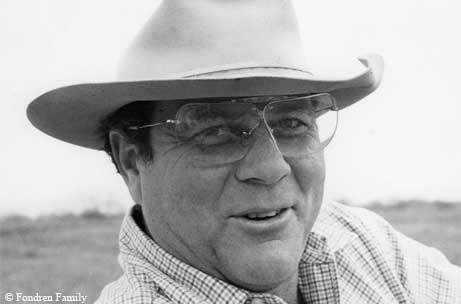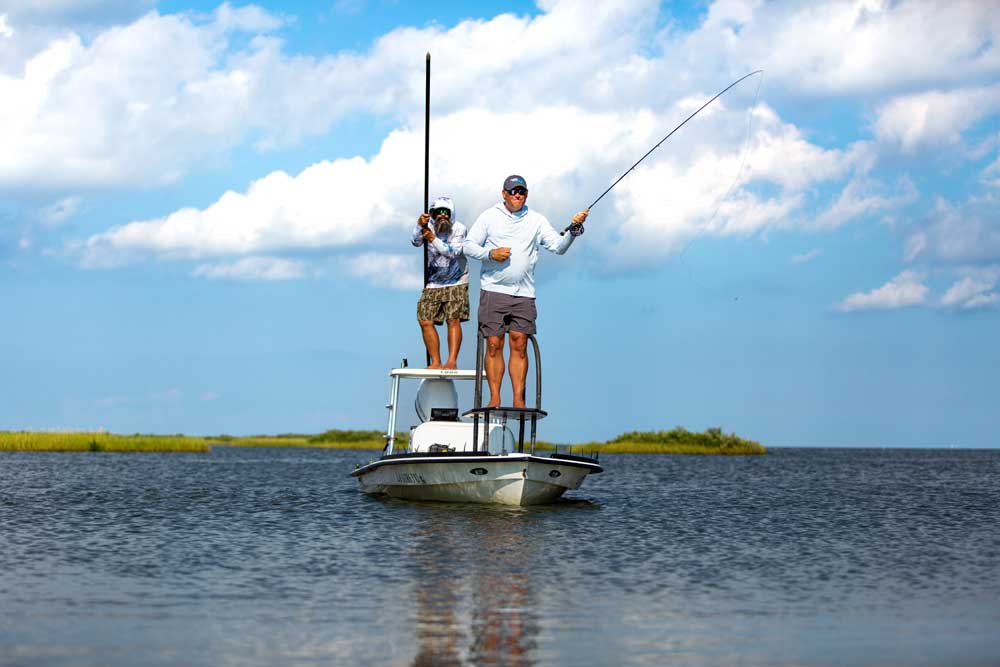Newspapers would dub it the Redfish Wars, but before that Texas fishermen needed to coalesce a conservation movement from little more than thick air and brackish water. Enter the A-Team, led by a Texas football scion and future HOF outdoorsman.

Greg Tinsley
The year was 1977, a doomsday inflection point for the commercially exploited Texas redfish. Such despair brought to huddle an intimate group of recreational fishermen. There, from the confines of a tackle shop, they began organizing what many believed was the last stand for wild redfish.
At this tipping point, the standout among these conservation trailblazers was a 41-year-old football legend, and heir to the crown jewel of American Big Energy – Walter William Fondren III.
In 1953 Fondren had led Lamar High School to a Texas State Championship at tailback, earning All-State, -Southern, -American honors. Fondren also lettered in basketball, track, baseball – and he’d won his share of golf matches. His dad had played golf for the University of Oklahoma.
“Three” kept it in-state by enrolling at the University of Texas (citing the school’s world-class geology program), and he became the varsity quarterback as a sophomore before shifting to halfback. His all-purpose stats that year exceeded those of Lone Star football immortal Doak Walker.
As a senior, his new head coach, the inscrutable Darrell K. Royal, plugged Fondren back under center. The move was the cornerstone of the Royal Dynasty at UT, and it produced wins over three top-20 in-state rivals and a trip to the Sugar Bowl.
The ’56 season capped a storybook three-year varsity career in which Fondren reorganized the Longhorn record book. Fifteen topline citations in all to include passing, receiving, kick returning and punting. Two remain through present, both set by the senior competing on a “tweaked” knee: minutes played in a season (he was a two-way starter) and pass-competition percentage with a 10-attempt minimum (90.9% against Baylor).

So, yes, in ’77, at a small conservation summit featuring The Best of Good Old Boys, you’d better believe that Fondren was the elephant who had the room. And the name of the game plan that this lifelong outdoorsman, this fishing fellowship, began devising (and funding and executing) – the relentless offense they began running politically, the indefatigable rallies they organized in support – is forever now known as the Coastal Conservation Association (CCA), with Fondren as its chairman emeritus.
Gill nets were outlawed in Texas coastal waters in 1981, the same year that red drum and speckled trout were declared game fish there. And the backroom dramas and the legislative war stories to achieve those victories were completely Texas-sized and of such national preeminence that news of them electrified fishermen far beyond the Gulf Coast community.
All of which was a very good thing, because also in the early 1980s, the master-chef of Cajun cuisine, Paul Prudhomme, unveiled his scintillating recipe for blackened redfish, which to this day remains de jour among hundreds of restaurants from New Orleans to New York City.
In so many ways, the fish itself is such a remarkable animal. The red drum (males loudly vibrate their swim bladders to excite females), or more commonly the “red,” is a uniquely powerful adversary capable of exceeding 90 pounds. Whether encountered in shallow back-bay pools or deeply offshore, this ghostly length of plate-scale and muscle is among the most willing and opportunistic of the predator/scavengers, and it is general to all of the fishing techniques – from the most basic tenets of hook-and-bait to the art of fly casting.

With some astonishment, the Texas Gang and “Save the Redfish” became synonymous. By the close of the 1980s, the organization’s wise-use marine resource philosophies were being quickly adopted by most every individual hero who drove a pickup truck.
Nearing the 40-year mark, CCA had also secured Pacific-, Atlantic- and full Gulf-Coast bona fides. Today, CCA certainly remains conservation’s driving force all along the shores of the nine contiguous states (North Carolina through the Texas Gulf) where redfish prevail.
As a next-level player in the funding of marine science, as a personifying mouthpiece for wise-use recreational fishers, as our national coastline’s most ferocious watchdog for mismanagement – the primacy of CCA remains undefeated.
Among the long list of prestigious accolades and positions Walter W. Fondren III earned and enjoyed – family, philanthropy, sport, business and conservation – he likely considered the 2009 CCA Lifetime Achievement Award, the organization’s first such recognition, among his most satisfying. He received the honor the year before his passing at the age of 74.
Mossy Oak is a proud corporate contributor to the endeavors of the CCA, and we are indeed privileged to raise our hats to these greatest of the conservation activists – past, present and future.
For membership to this esteemed organization, click www.joincca.org.































